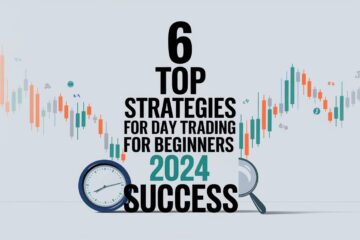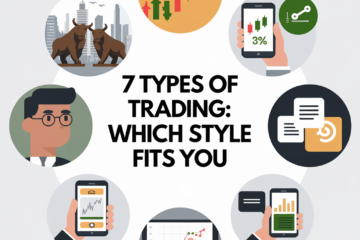Markets feel louder each year. Price moves happen in seconds, algorithms fire before many traders even see the candle close, and news turns into volatility almost instantly. That is exactly why traders in 2026 need a smarter way to think about direction, risk, and timing. This is where quantum trading strategies come in.
These ideas sound technical at first, yet they translate into very practical decisions on charts. Instead of betting everything on one storyline, you start treating the market as a set of possible paths. As a result, your plans become more flexible, less emotional, and more in tune with how modern markets actually behave.
Before Quantum: Make Sure Your Basics Are Solid
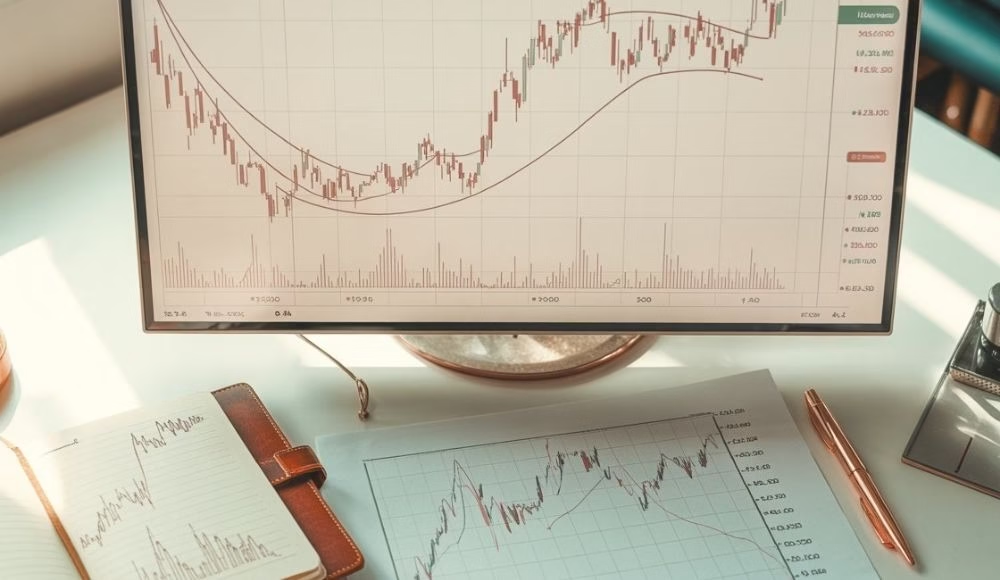
Quantum-style thinking sits on top of strong foundations. Concepts like order types, candlesticks, trends, and support–resistance still matter. For that reason, it helps to review a clear guide such as the blog post Mastering Stock Market Basics: A Powerful Guide for Beginners before layering on anything advanced.
In addition, algorithmic trading has already changed how markets move. According to Investopedia’s explanation of algorithmic trading, software now executes orders based on predefined rules, time, price, and volume. That shift created faster markets and paved the way for more complex models.
So, quantum-style ideas do not replace classic tools. Instead, they upgrade how those tools work together when conditions turn chaotic, especially in 2026 and beyond. Many beginners ask, “What is quantum trading?” and the simplest answer is that it adds structure, layers, and multiple paths to every decision.
Why Quantum Trading Strategies Matter in 2026
The financial world is heading toward a more data-heavy, model-driven phase. Articles on algorithmic trading volumes point out that a huge share of global trading already flows through automated systems. As more AI and analytics join this mix, human traders need better ways to understand what is happening beneath the candles.
Quantum trading strategies become important because they:
- Treat market movement as a field of probabilities instead of a simple “up or down” guess.
- Help you map several scenarios for each setup, so you feel less shocked when the price takes an unexpected path.
- Blend well with AI tools that scan news, sentiment, and order flow in real time.
- They also align with real experiments from firms like IBM and HSBC, where quantum-enabled algorithmic bond trading trials showed clear improvements over classical models.
Meanwhile, quantum computing is moving from theory toward commercial reality. A recent MIT Sloan article on quantum computing notes that finance leaders already evaluate where these methods will fit in the next few years. Traders who understand the logic now will adjust faster when tools catch up.
When traders explore probability-first trading methods, they quickly realise how much more control they gain during uncertain market phases
How Quantum Concepts Translate into Trading Decisions
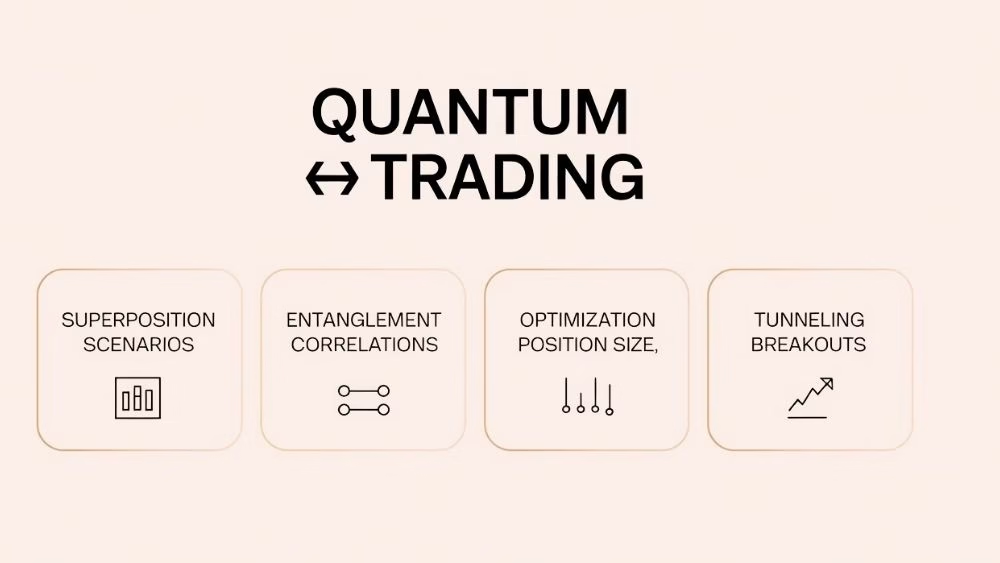
The physics behind quantum systems can feel abstract. However, a few core ideas translate nicely into trading language when simplified.
Think of multi-scenario trading as the foundation here, because each price path becomes part of a structured trading approach instead of a single biased guess.
- Superposition → Multi-scenario charts
Price can travel along different paths, so plans include those options instead of just one prediction.
- Entanglement → Linked assets
Markets influence each other, so quantum-style thinking encourages you to track correlations between indices, currencies, and sectors.
- Optimization → Smarter position sizing
Quantum-inspired optimizers search for the best mix of trades under risk constraints.
- Tunneling → Breakout probabilities
Some price levels look “solid” until they suddenly break. Probability layers help you see which ones are likely to give way.
For a feel of how this layered thinking looks in a non-trading context, the article Liquid Web Design 2026: Why Every Screen Flows offers a great parallel. Screens in that post flow softly between states; quantum-style trading treats market states the same way.
Core Quantum Trading Strategies You Can Start Using
Now it is time to connect the concept to daily screens. These quantum trading strategies do not require a physics degree. They ask for structure, patience, and a willingness to think in probabilities.
This is also where scenario mapping trading strategies come into play, helping traders understand how each possible move connects with the next.
- Multi-Scenario Price Path Planning
Instead of predicting one straight move, you sketch three realistic possibilities for any setup:
- Continuation in the trend direction.
- Mean reversion back to a fair value zone.
- Range-bound chop around a key level.
Then, you:
- Assign rough probabilities to each path.
- Define invalidation rules for every scenario in advance.
- Place entries and exits only where the reward–risk makes sense across several possibilities, not just one.
This feels similar to the way the Smart Ring Trend 2025 post handled multiple use cases and futures for a single device instead of locking onto one angle. This multi-path trading analysis helps reduce emotional decisions and keeps plans grounded even when volatility increases.
- Quantum-Style Portfolio Optimization
Institutions already test quantum methods for portfolio construction. IBM and Vanguard, for example, explored variational quantum algorithms for portfolio optimization in a recent study on quantum optimization for finance.
Retail traders can adapt the idea through:
- Simple spreadsheets that track exposure by sector and asset type.
- Rules that limit how much capital sits in any single theme.
- Periodic rebalancing whenever volatility or correlation measurements shift.
The mindset matters more than the hardware. You start thinking as a portfolio manager, not as someone chasing each trade in isolation. Retail traders using quantum-based strategy design can create cleaner exposure maps, especially when markets rotate fast.
- Probability-Layered Risk Zones
In classic trading, stops and targets sit at exact prices. Quantum-style risk mapping softens those edges and turns them into zones instead.
You can:
- Mark comfort, caution, and danger bands on the chart.
- Watch how often price respects each band over several trades.
- Move stops gradually through zones instead of shifting them impulsively.
This reduces emotional spikes because outcomes no longer feel like binary wins or failures. They land somewhere on a structured probability ladder. These probability zones trading ideas work best when combined with structured scenario trading, so the chart always feels predictable.
How Quantum Trading Strategies Fit Your Trading Style
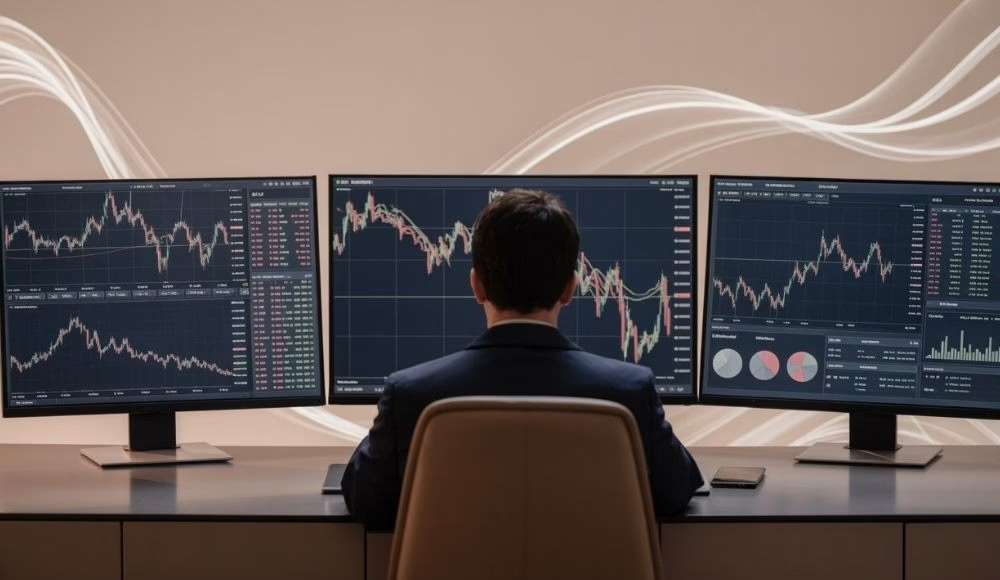
Different trading styles absorb these ideas in different ways. That flexibility is a huge advantage.
- Day traders can treat each session as a field of intraday scenarios. Order-flow and volatility guide which scenario becomes most active.
- Swing traders can map weekly or daily paths around earnings, macro events, or sector rotation.
- Position traders can lean heavily on portfolio optimization and cross-asset correlations.
Additionally, psychological patterns become easier to manage when thinking in layers. Neuromarketing research already shows that decision-making follows certain brain shortcuts; the article Neuromarketing Techniques Marketers Need in 2026 explains this clearly in a marketing context. The same mental shortcuts appear when traders react to P&L swings, so a probability-first approach naturally cools emotional extremes. Advanced scenario mapping trading becomes especially useful for traders who depend heavily on weekly or monthly planning.
Quantum Trading Strategies 2026 and Technology Trends
Markets rarely move in isolation from broader tech trends. Quantum computing, AI, and automation evolve together, and traders sit right in the middle of that intersection.
Some key shifts include:
- Quantum hardware and software firms are attracting attention in articles about quantum computing stocks.
- Financial institutions are running pilot projects with quantum-based risk and optimization tools.
- AI bots showing surprising group behaviors in experiments covered by outlets like Bloomberg, where research tested how simple bots might collude in markets.
The EMO Desktop Pet Robot 2025 piece shows how fast everyday devices now incorporate smart behavior. Trading tech will follow the same curve, and quantum-style thinking prepares traders mentally for that upgrade.
Building A Quantum-Inspired Workflow Without Overwhelm
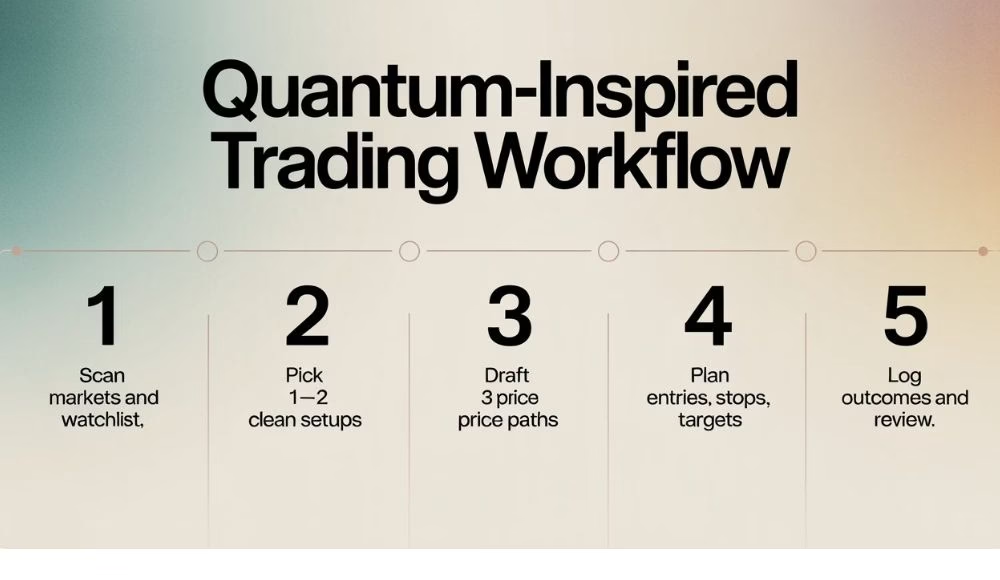
Complex language can scare traders away, so a gentle workflow keeps things manageable. Here is one simple pattern to adopt.
- Scan markets using your usual watchlist and sector view.
- Pick one or two instruments where the structure looks clean.
- Draft three price paths and assign rough probabilities to each.
- Decide on entries, stops, and targets that make sense across several paths.
- Log the outcome with a short note: which path played out and how close your probabilities were.
Over time, this builds a feedback loop. You will notice certain biases, such as overrating dramatic moves or underrating quiet consolidations. That awareness forms the psychological edge behind many quantum trading strategies because you keep adjusting your internal probability engine. This entire framework forms a future-ready trading method that adapts naturally as markets evolve.
Mistakes To Avoid with Quantum Trading Strategies 2026

New ideas always feel exciting, yet quantum trading strategies can backfire if traders rush in without structure. A few recurring mistakes show up when traders try to mix advanced concepts with real money. This section keeps you away from the most common traps so your learning curve feels smoother.
- Treating Quantum as a Magic Shortcut: Some traders expect instant accuracy the moment they use words like probability or optimization. Quantum-style thinking still needs solid risk rules, realistic expectations, and patience across many trades.
- Overloading Charts with Complex Tools: Adding too many indicators, models, and AI widgets at once quickly creates confusion. A lighter chart with clear scenarios usually delivers better decisions than a busy layout that feels impressive yet stays unclear.
- Ignoring Basic Data Quality: Quantum-style models depend on clean inputs. If price data, news sources, or correlations are messy, the outputs suffer. Careful data selection and simple filters protect your analysis from noisy signals.
- Risking Full Capital on Untested Ideas: Some traders jump to full position size after a few wins. A steady approach, with small risk while strategies are new, gives you space to refine entries, exits, and scenario planning without painful drawdowns.
These mistakes also explain why quantum trading is real in the sense that the thinking model drastically improves structure and reduces noise.
Getting Started with Quantum Trading Strategies Safely
Safety and consistency matter more than fancy terms. Quantum-style thinking still fails without risk discipline.
So, traders can:
- Start on demo or micro-size live trades while testing scenario work.
- Keep total risk per trade small, often one or two per cent of capital or less.
- Blend quantum-style planning with traditional tools covered across TDP, such as the automation-friendly mindset in Top E-commerce Automation Tools Every Seller Should Know in 2025.
- Learn more about automation through resources like Investopedia’s guide to coding trading bots, then decide how much to automate.
Additionally, staying curious about the bigger picture helps. Pieces like MIT’s overview of quantum readiness remind traders that quantum adoption will likely arrive in stages. That means there is time to learn, practice, and adapt. As traders get comfortable, many test whether quantum trading is profitable by tracking results over several months instead of a few trades.
Conclusion
Quantum trading strategies turn markets from a scary guessing game into a structured set of possibilities. Instead of clinging to a single prediction, traders look at several paths, weigh them like probabilities, and build plans that still make sense when the unexpected happens. When that mindset combines with the strong foundations from Mastering Stock Market Basics and the tech-forward curiosity shown in blogs like Liquid Web Design 2026, trading in 2026 feels more intentional and less chaotic. Many traders now see quantum trading as the future of finance because it supports clearer planning, better risk structure, and stronger emotional control.
As markets grow faster and more automated, those who adopt quantum trading strategies early gain an advantage that goes beyond signals. They gain a calmer head, a clearer process, and a way of thinking that fits the next era of finance.
FAQS
What are quantum trading strategies in simple terms?
Quantum trading strategies use ideas from quantum computing and manage trades using probabilities instead of a single prediction.
Do traders need actual quantum computers to use these ideas?
No. Traders use quantum-inspired thinking on normal platforms, combining scenario planning, probability ranges, and basic portfolio checks.
How are quantum trading strategies different from normal algorithmic trading?
Regular algorithms follow fixed rules. Quantum-style trading places those rules inside a flexible probability framework that adjusts as conditions shift.
Are quantum trading strategies suitable for beginners?
Yes. Beginners can start with simple multi-scenario plans, small position sizes, and a journal, then add tools slowly as they learn.
Can day traders use quantum trading strategies 2026 effectively?
Day traders benefit from scenario maps and probability zones that help them stay calmer when price moves against their first idea.
How do these strategies help with portfolio management?
Quantum-style methods view the account as a whole. They balance exposure across sectors so no single position dominates overall risk.
Are big institutions already using quantum ideas in trading?
Some banks and funds test quantum-inspired optimizers, mainly for portfolios and bonds, so the industry moves toward blended classical and quantum-style models.
Which tools can retail traders use today to apply quantum-style thinking?
Retail traders can use platforms with probability cones, scenario analysis, AI tools, or simple spreadsheets to compare paths before trading.
How can a trader measure whether these strategies work?
Traders can watch for smaller drawdowns and steadier decisions; all recorded in a journal and reviewed regularly.
What is the best way to start learning quantum trading strategies?
The best way is to strengthen trading basics, read short explainers on quantum finance, then practice multi-scenario planning on a demo account.


